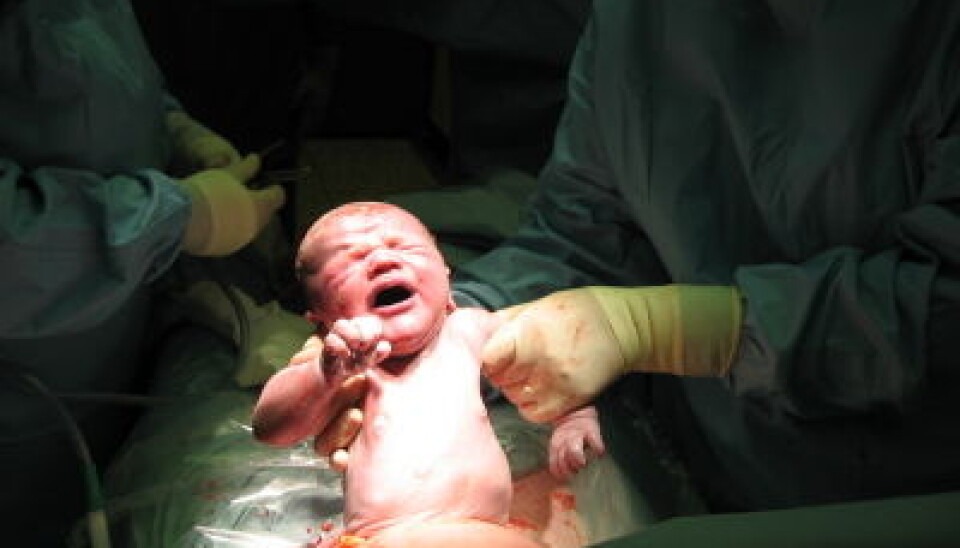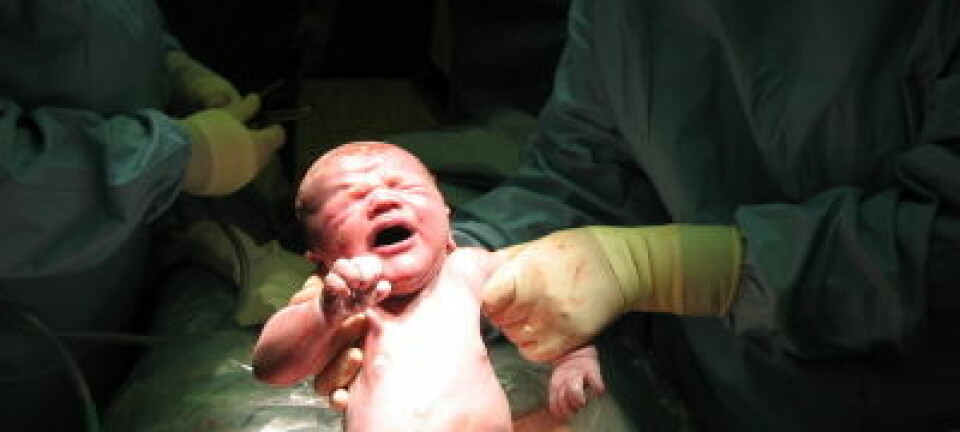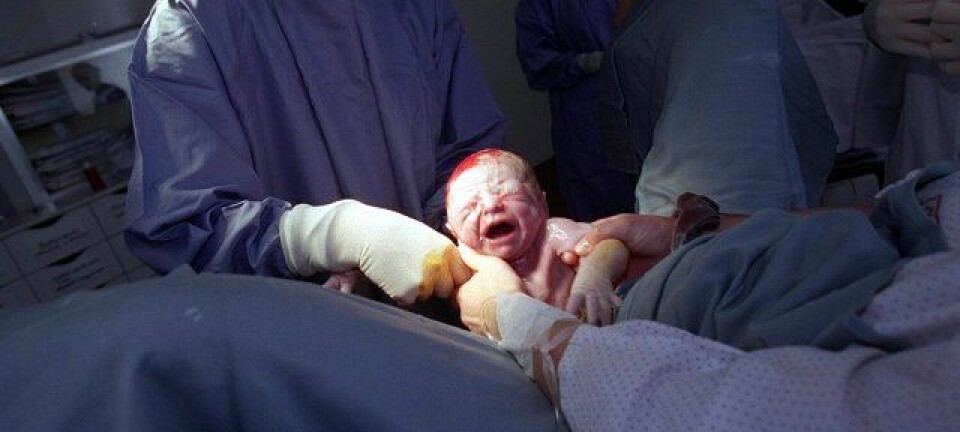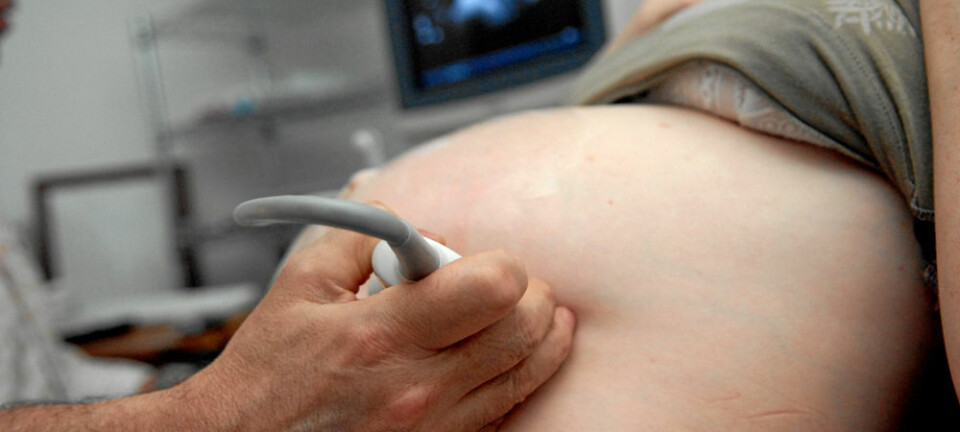
C-section infants don’t get enough good microbes
Children born by Caesarean section start life with insufficient intestinal bacteria flora. These bacteria are known to play a part in protecting children from developing allergies and children who lack them may be at higher risk of other health problems.
During a regular vaginal birth infants come in contact with a rich dose of their mother’s bacteria as they are pressed through the birth canal.
C-section babies don’t get this exposure, which is likely to be vital in developing the immune system and helping it to mature.
Less diverse bacterial flora
Our total population of microbes such as bacteria and yeasts, known as our microbiota, is so enormous that, like it or not, a healthy adult consists of more microbe cells than human cells. Caesarean births are known to have an impact on the number and diversity of microbes in an infant’s gut.
Now a group of Swedish and Scottish researchers have discovered that C-section children appear to have too few bacteria of the phylum Bacteroidetes during their first two years.
Scientists have seen that Bacteroidetes aids in protection against allergies, so not having enough diversity in this group is seen to be unfavourable.
The human body can overreact to foods, for example, if as a child an individual doesn’t have enough types of bacteria.
Diabetes, irritable bowel syndrome, asthma, obesity…
In addition to being at greater risk of allergies, C-section kids are more likely to grow obese or develop irritable bowel syndrome.
Several studies have also revealed a higher risk of asthma and becoming considerably overweight by the age of three.
The Norwegian Institute of Public Health notes that about one in six Norwegians are now born by Caesarean.
The number of Caeserean section births has spiked in recent decades. The share of C-section births is now 16 percent, but it was just four percent in the mid-1970s.
Most of these operations are not performed simply because the mother requests it, but rather because of indications of a real need, for instance that the foetus isn’t getting enough oxygen.
An earlier introduction to solid foods?
‟Sometimes C-sections are necessary, but pregnant women and physicians should be aware that this method of birth can have an impact on the child’s health,” says Professor Maria Jenmalm of Linköping University in a press release.
Jenmalm thinks we need to develop some new approaches for C-section children.
‟It might not be so smart to breastfeed exclusively during the entire first six months. Exposing these children to solid foods at a younger age can stimulate a greater diversity of gut bacteria,” says the professor.
This is contrary to the general recommendations of the Norwegian Directorate of Public Health, which says infants should preferably have breast milk as their only source of nutrition during their first half year.
But the recommendations make exceptions for when the baby isn’t gaining enough weight or when it appears to be still hungry right after being nursed.
Rubbing new-borns with bacteria
The press release from Linköping University describes an experimental study now underway in Puerto Rico.
The microbiota of pregnant women is being analysed prior to her being given a C-section. After the delivery the medical personnel take a compress with secretions from the mother’s vagina and rub it into the face of the new-born infant.
Medical scientists think this can transfer vital bacteria to the child. A similar study is in the pipeline in Sweden.
Defence cells
Infants that are born vaginally have more than just a larger diversity of bacteria in their intestinal system. The new Scottish-Swedish study has also found that they have more of a certain blood component that is linked to the immune system.
These are the Th1 helper cells, which help in preventing allergic reactions.
The scientists have run a bio-molecular analysis of the gut microbes of 24 children.
These test subjects were followed up from birth to the age of two. Nine of the youngsters were delivered by Caesareans and 15 had undergone ordinary vaginal births.
The results of the new study have been recently published in the Scientific journal Gut.
-----------------------------
Read the Norwegian version of this article at forskning.no
Translated by: Glenn Ostling









